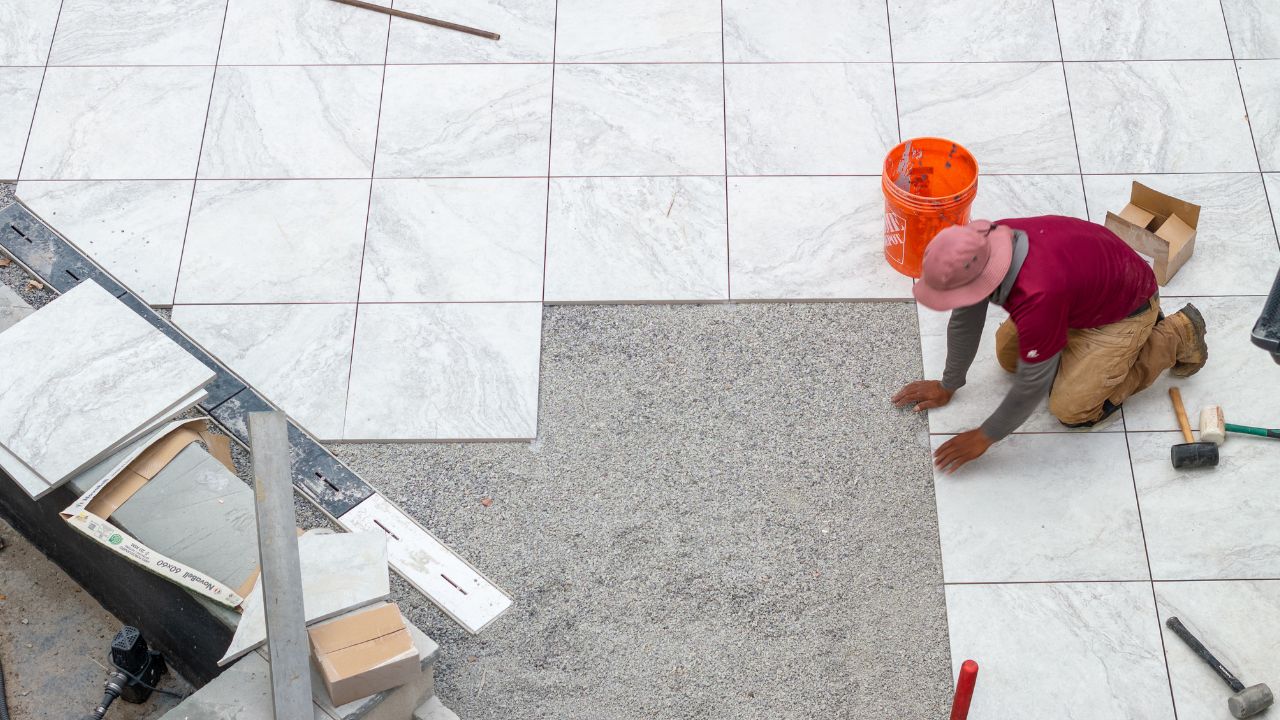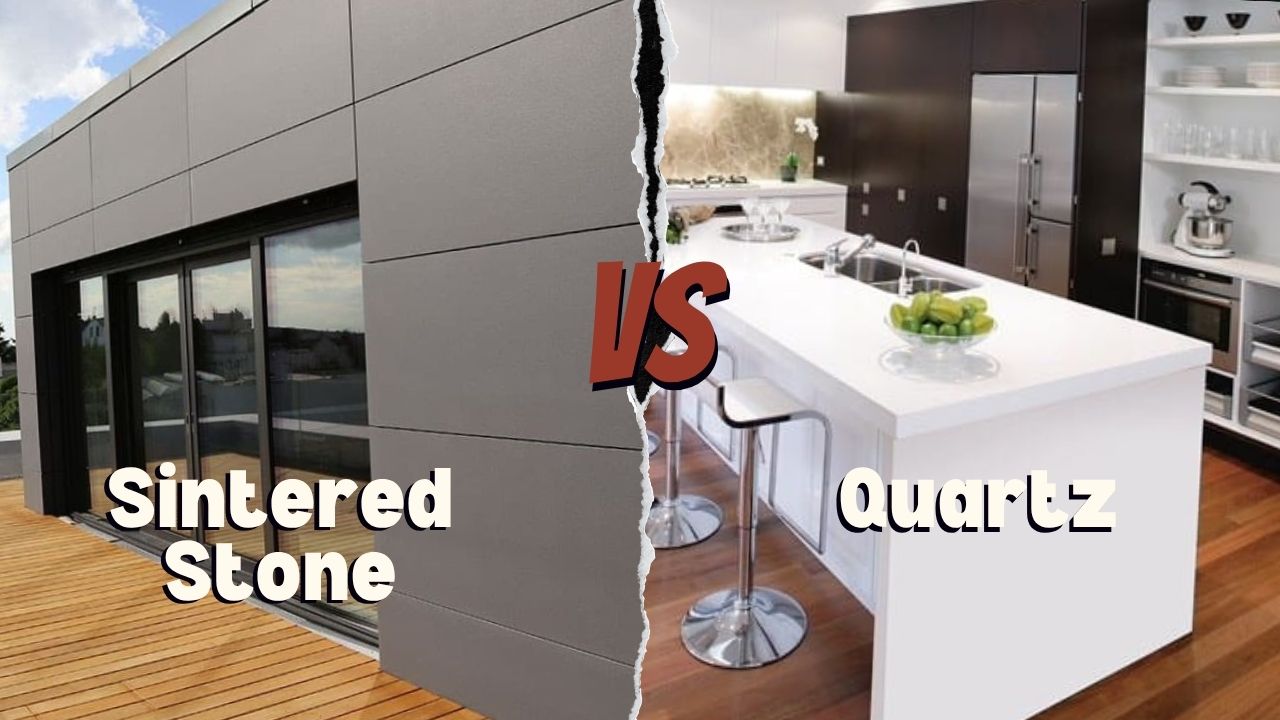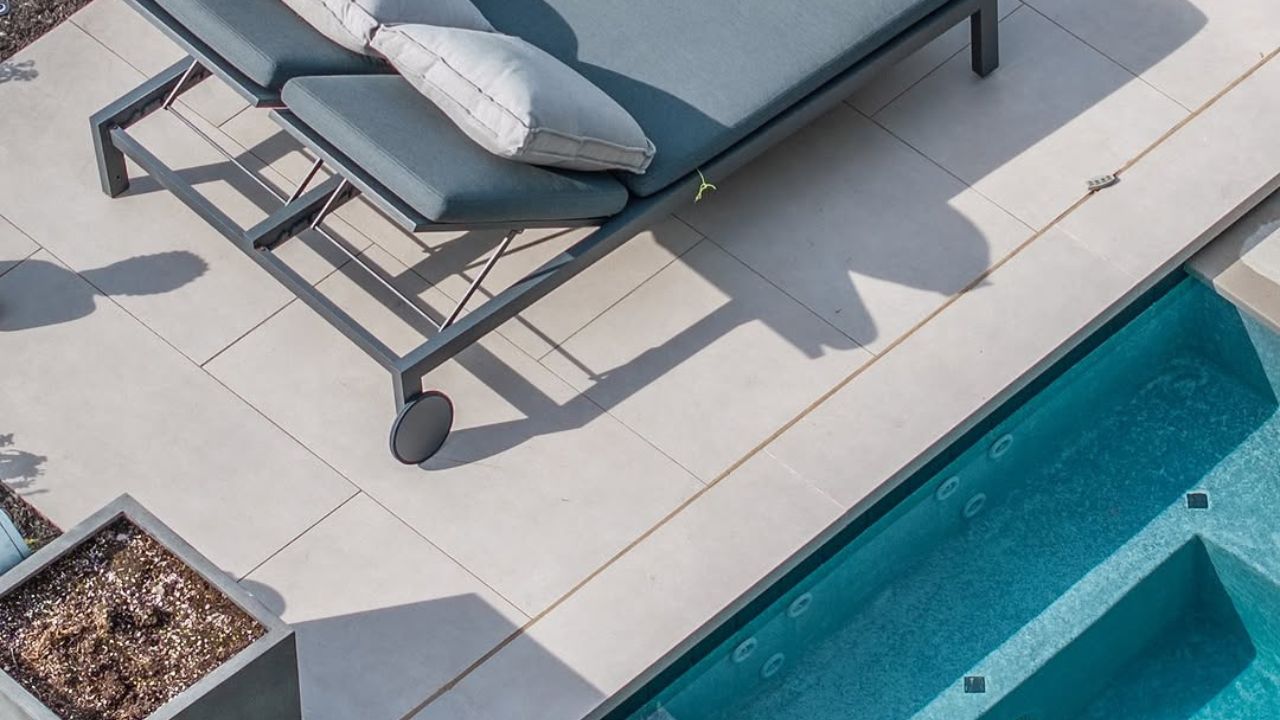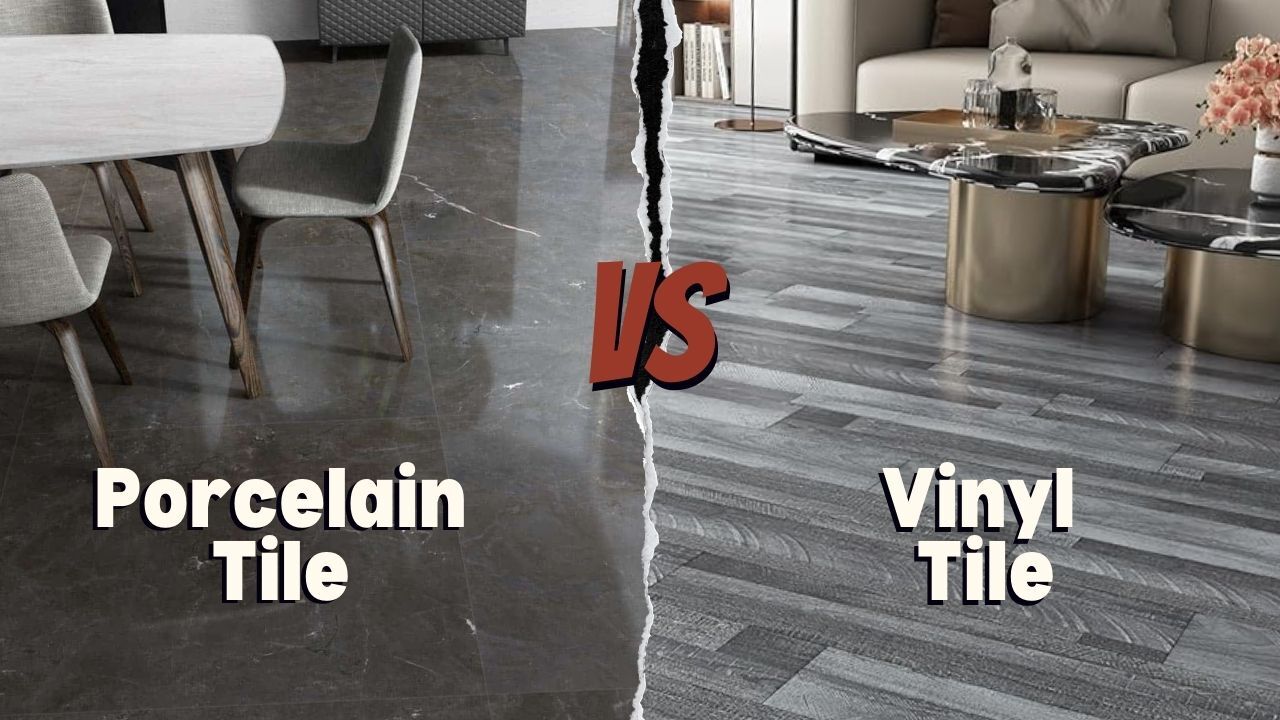When homeowners and project managers work on the paver installation outdoors, the tile layout patterns matter a lot. This gets crucial in laying 48×48 Large porcelain pavers or large format tiles, 24×24 pavers, or 24×48 pavers or large format porcelain slab. They can shift, warp, or create uneven joints if not installed with the correct staggering methods. The 30% running bond for porcelain pavers is often recommended by tile professionals instead of the 50% offset. It combines durability and performance with aesthetics. But not just for porcelain, any type of pavers with a similar thickness can take advantage of this pattern. Here is why experts recommend using a 30% running bond.

Why 30% Running Bond for Porcelain Pavers Is Ideal for Outdoors?
While there are other patterns available, the 30% running bond is a practical choice for most paving projects containing porcelain pavers. These are the reasons why
1. Controls Tile Warpage
Porcelain tiles are undoubtedly durable, but the larger tiles over 18 inches often show slight bowing or warping. This is because of the firing process, where these tiles go through 1200°C and above. A 50% running bond, the highest point of one tile aligns with the lowest point of the next, creating lippage (raised edges).
On the other hand, the 30% running bond overlap shifts away from the tile’s crown. It reduces the visible warpage. You get a flatter surface and safer footing in most climate types.
2. Reduces Lippage Complaints
Paver lippage is one of the most common problems with outdoor pavers. It is frustrating for most homeowners and project managers as it causes an uneven floor and results in trip hazards in outdoor patios, pool decks, and walkways. A 30% offset minimizes this by creating smaller joint height differences.
An expert tile installer and even porcelain pavers suppliers in New Jersey, like NT Pavers, recommend using a leveling system with spacers. Use clips during installation to remove lippage further.
3. Maintains Structural Integrity
Porcelain pavers are heavier and denser compared to ceramic pavers. A 50% bond stress along the tile’s weakest axis. Over time, this stress results in cracked pavers and hollow spots. However, the 30% bond divides the pressure more evenly. This allows the pavers to maintain their strength. This is especially important in high-traffic areas like driveways, courtyards, and commercial plazas.

4. Improves Aesthetics
A 30% bond creates rhythm without making the stagger too predictable. It avoids the harsh, ladder-like effect of a 50% bond while still guiding the eye forward. Designers consider it striking the right balance between visual movement and uniformity. When paired with porcelain pavers that mimic natural stone, wood, or concrete, the 30% running bond enhances the realism of the surface.
5. Industry Standards Support It
The Tile Council of North America (TCNA), the American National Standards Institute (ANSI), and leading tile manufacturers recommend a maximum of 33% offset for tiles longer than 18 inches. According to this industry consensus, 30% is the safest amount.
Comparing 30% vs 50% Running Bond for Porcelain Pavers
Choosing an offset pattern is important for a better paving solution. The difference between 30% and 50% may seem small, but it changes the entire performance of porcelain pavers. A 50% offset highlights natural warpage in large porcelain pavers. A 30% running bond reduces these problems. Here is a comparison between a 30% bond vs a 50% running bond.
| Feature | 30% Running Bond | 50% Running Bond |
| Offset Amount | Tiles staggered by one-third of their length. | Tiles staggered by half of their length. |
| Industry Standards | Recommended by TCNA and ANSI for large-format tiles. | Not recommended for tiles longer than 18 inches. |
| Lippage Risk | Minimizes lippage by avoiding crown-to-edge overlap. | High lippage risk due to crown-to-edge alignment. |
| Surface Flatness | Creates a smoother walking surface. | Increases uneven joints and trip hazards. |
| Structural Strength | Distributes stress evenly across tiles. | Concentrates stress along the weakest tile axis. |
| Aesthetic Appeal | Balanced, natural movement without harsh lines. | A strong “ladder effect” may look unnatural. |
| Installation Ease | Requires planning but is achievable with leveling tools. | Simpler layout, but leads to performance issues. |
| Best For | Large-format porcelain pavers (18”+). | Smaller tiles or decorative walls, not floors. |
Practical Examples of a 30% Running Bond for Porcelain Pavers
A 30% running bond can help you create a stone paving solution that will not only look great, but it will also be much stable.
Backyard Patio:
You can install 24×48 porcelain pavers with a 30% running bond. The tiles will mimic natural planks without the joint lippage that would have ruined the look.
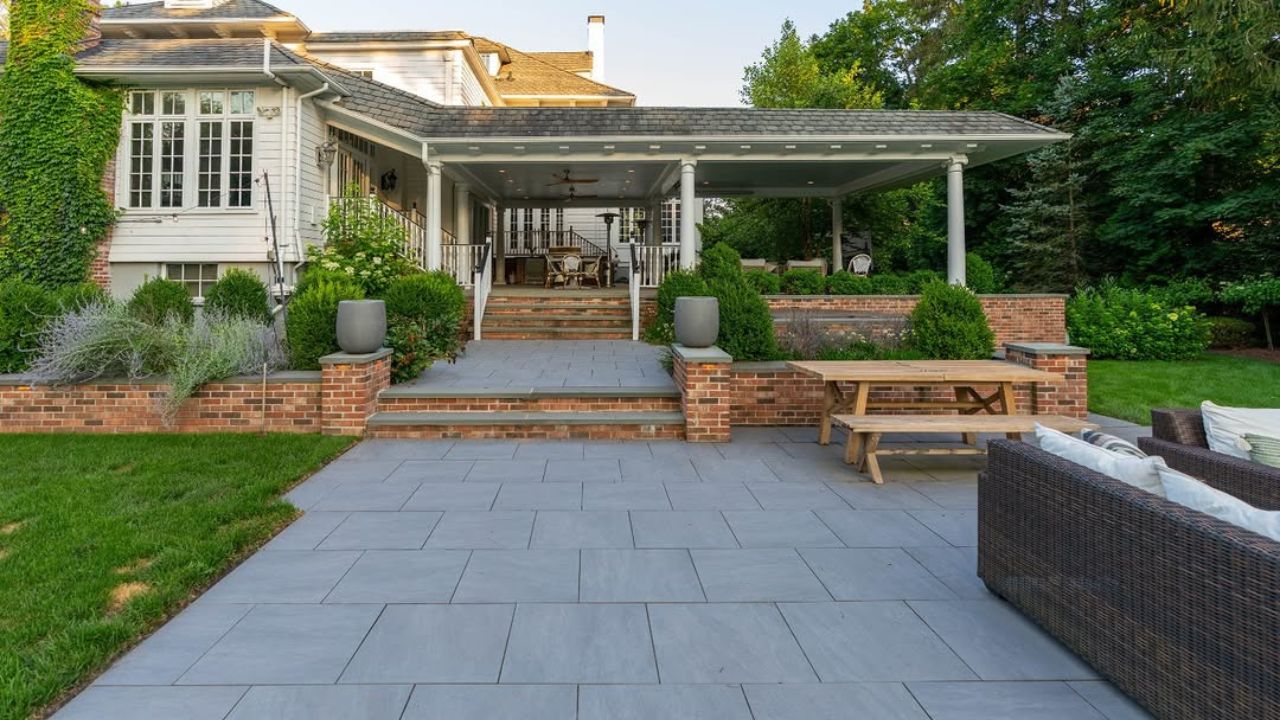
Commercial Walkway:
Commercial projects like plazas can leverage the large format porcelain pavers in a 30% offset for safety. In this setting, when tile meets the half of the next tile eliminates tripping hazards that a 50% bond would have introduced.
Pool Deck:
Salt-resistant porcelain pool deck arranged in a 30% running bond can create a slip-resistant and smooth barefoot experience for children and adults.
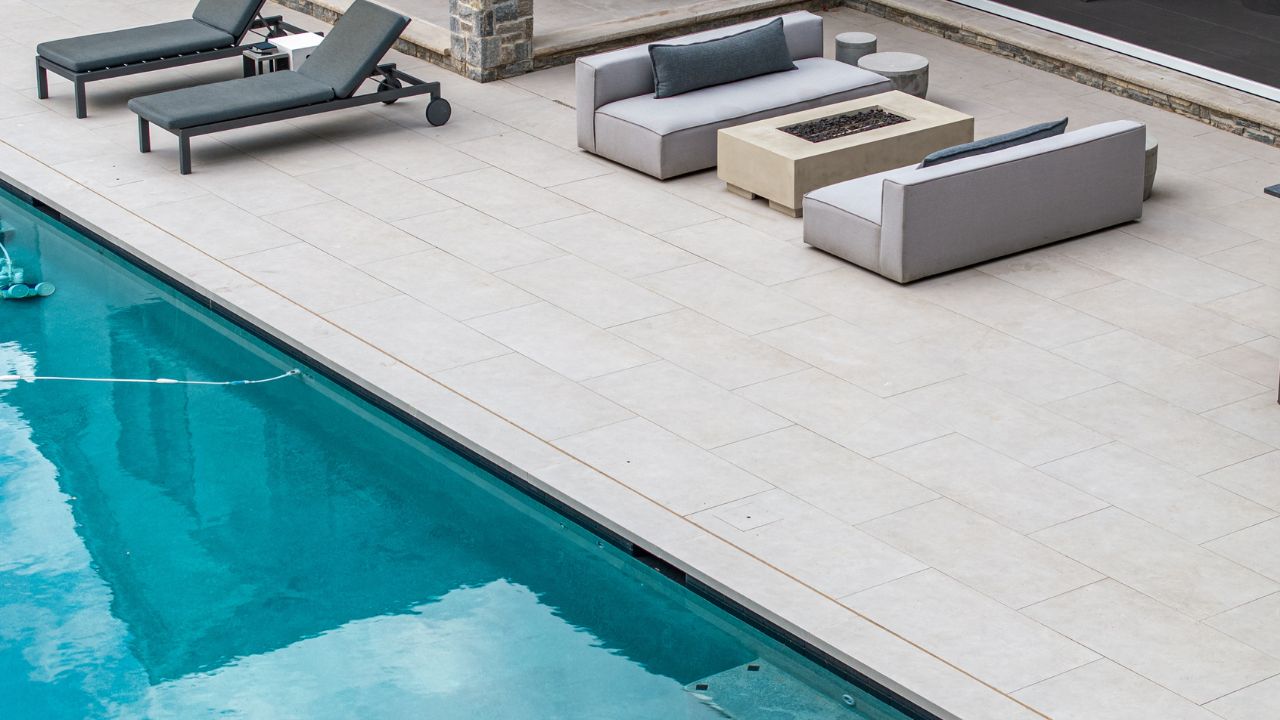
Such real-world applications prove why this 30% running bond for porcelain pavers remains the gold standard in 2025.
Expert Tips for Installing a 30% Running Bond
Here is how the 30% running bond for porcelain pavers should be installed for effective results.
- Opt for a tile leveling system. Use the clips and wedges to prevent movement while the mortar sets.
- Follow manufacturer guidance for efficient installation. NT Pavers offer installation instructions specific to their porcelain lines.
- Consider joint width. Keep the grout joints or grout lines at least 3mm wide to allow for minor tile variations.
- Consider the substrate flatness. A running bond requires a flat and stable surface. Level the surface before laying.
- Before installing the tile, dry lay the pattern. Before adding adhesive, this will give you a better idea of the pattern.
FAQs About 30% Running Bond for Porcelain Pavers
Let’s answer your questions about the 30% running bond for porcelain pavers.
Why not use a 50% running bond for porcelain pavers?
A 50% offset aligns high and low points of tiles, increasing lippage and reducing tolerance against heavy foot and vehicle traffic. This is not well-suited for large-format porcelain as it results in trip hazards.
Is a 30% running bond best for outdoors?
Yes. The 30% running bond is the best choice for large format porcelain pavers and in areas like outdoors on patios, pool decks, and driveways because it prevents lippage and creates a surface with even weight distribution across tiles.
Is the 30% running bond more expensive to install?
The cost difference is smaller, but it requires planning and sometimes more cuts.
Do all porcelain pavers need a 30% running bond?
No. Smaller square tiles (12×12, 16×16) can use straight or diagonal patterns. The 30% running bond is well-suited for large-format tiles (over 18 inches).
Does NT Pavers recommend the 30% running bond?
Yes. NT Pavers follows the TCNA and ANSI guidelines and recommends a 30% running bond for large-format porcelain pavers.
Bottom Line
The 30% Running Bond for Porcelain Pavers has become a recommendation from experts for the porcelain paver installation guide. You can create a long-lasting, stable surface without having to worry about lippage, wearing out the edges, paver shifting, and create an appealing design rhythm.
For homeowners and project managers, these methods will ensure a smoother installation and a safe walking surface for years to come. NT Pavers recommended using this standard as it blends performance and beauty into one reliable choice.

